Do Hardy Annuals Come Back Every Year? Unraveling Their Growth Cycle
When you’re planning your garden, understanding the difference between annuals and hardy annuals can be quite important. Hardy annuals do not come back every year from the same plant. They complete their life cycle within a year, flowering and producing seeds before making way for new plants.
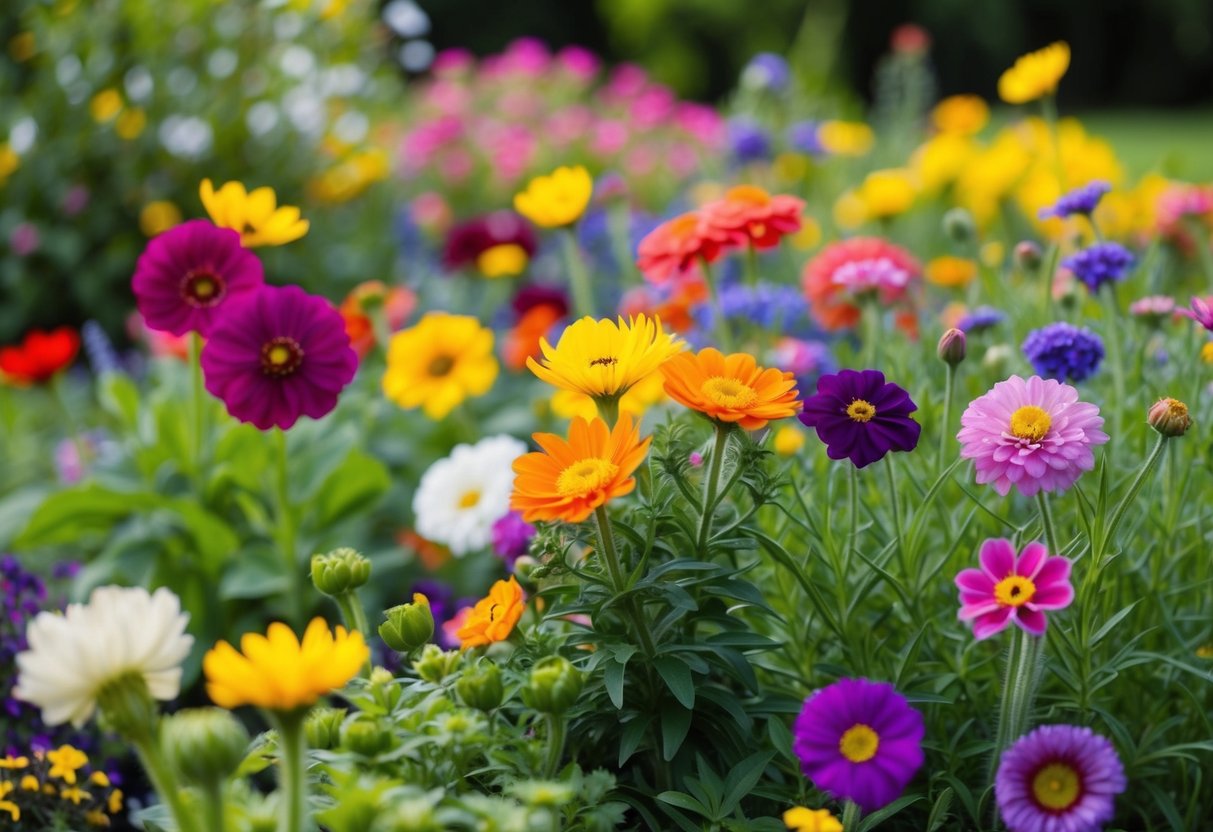
Even though these plants don’t regrow from the same root, you might still see them again. Hardy annuals are great at self-seeding, so they often return the next year in the form of new volunteer plants. This natural reseeding can create a charming and ever-changing display in your garden.
Exploring the possibilities these plants offer can add an unexpected burst of color each season. With their ability to bounce back through self-seeding, hardy annuals provide an exciting opportunity to watch your garden evolve year after year.
Understanding Hardy Annuals
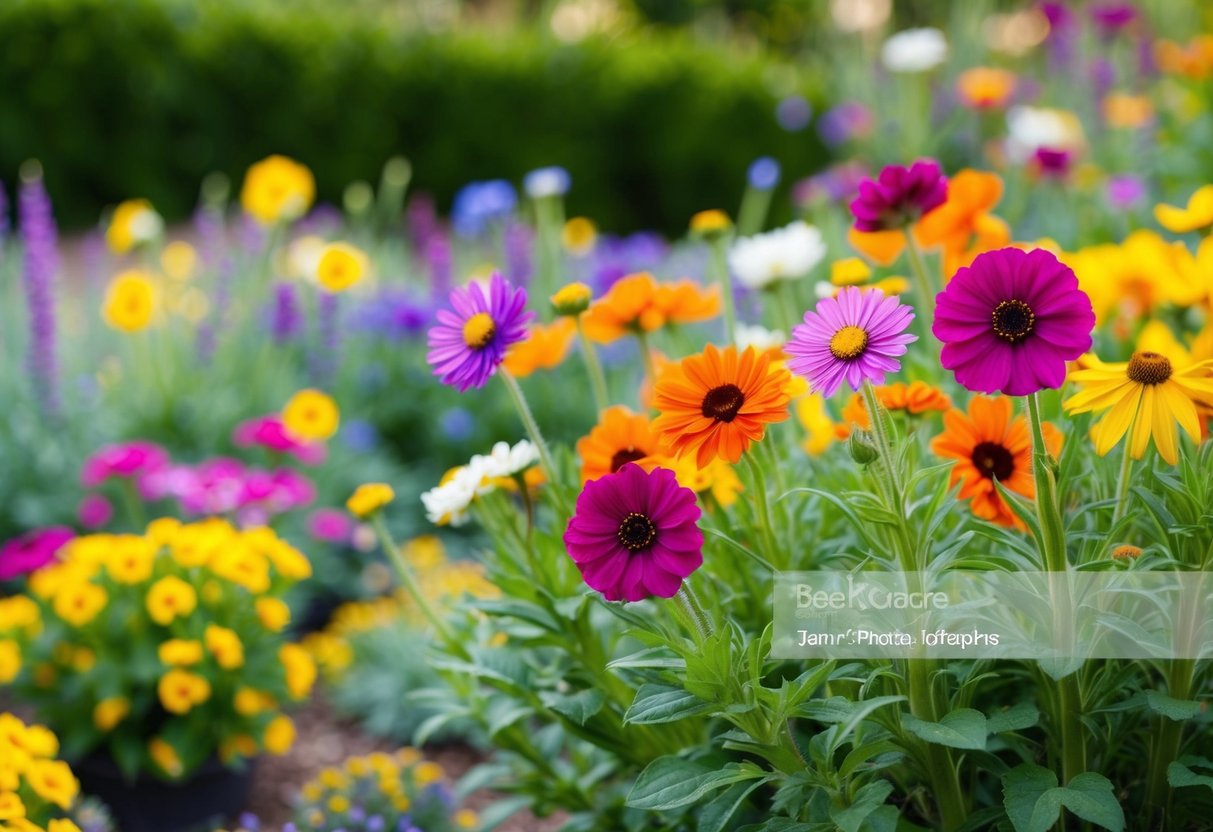
Hardy annuals are plants that complete their life cycle in one year, thrive in cool weather, and can be planted directly in your garden. They are known for their resilience and ability to self-seed, so you might see them pop up again without replanting.
Defining Hardy Annuals
Hardy annuals are a special type of annual plant. Unlike perennials, they grow, bloom, and die all within a single year. Despite their short life span, they are valued for their tolerance to cool temperatures. This makes them suitable for early spring planting. Typical examples include snapdragons and calendula.
These plants are good for gardeners looking to add color early in the growing season.
You can direct sow hardy annuals, which means planting seeds directly into the ground where you want them to grow. This skips the step of growing seedlings indoors and transplanting. Keep an eye on weather patterns, as many hardy annuals will withstand slight frosts. If you plant them in autumn, they’ll appear in early spring.
The Life Cycle of Hardy Annuals
The life cycle of hardy annuals begins when seeds are planted, either in fall or spring. They grow quickly, with most varieties blooming within a few months of germination. After flowering, they produce seeds before dying. Unlike perennials, they don’t come back from the same root system each year. Many hardy annuals self-seed, meaning their seeds naturally fall to the ground and can sprout the following year.
Direct sowing is a popular method for these plants. Hardy annuals like larkspurs and sweet peas will often survive light frosts. Make sure to plant them in well-draining soil to prevent mold and other issues. This predictable cycle of growth and reproduction makes them attractive to gardeners looking for reliable early blooms.
Gardening Basics for Hardy Annuals
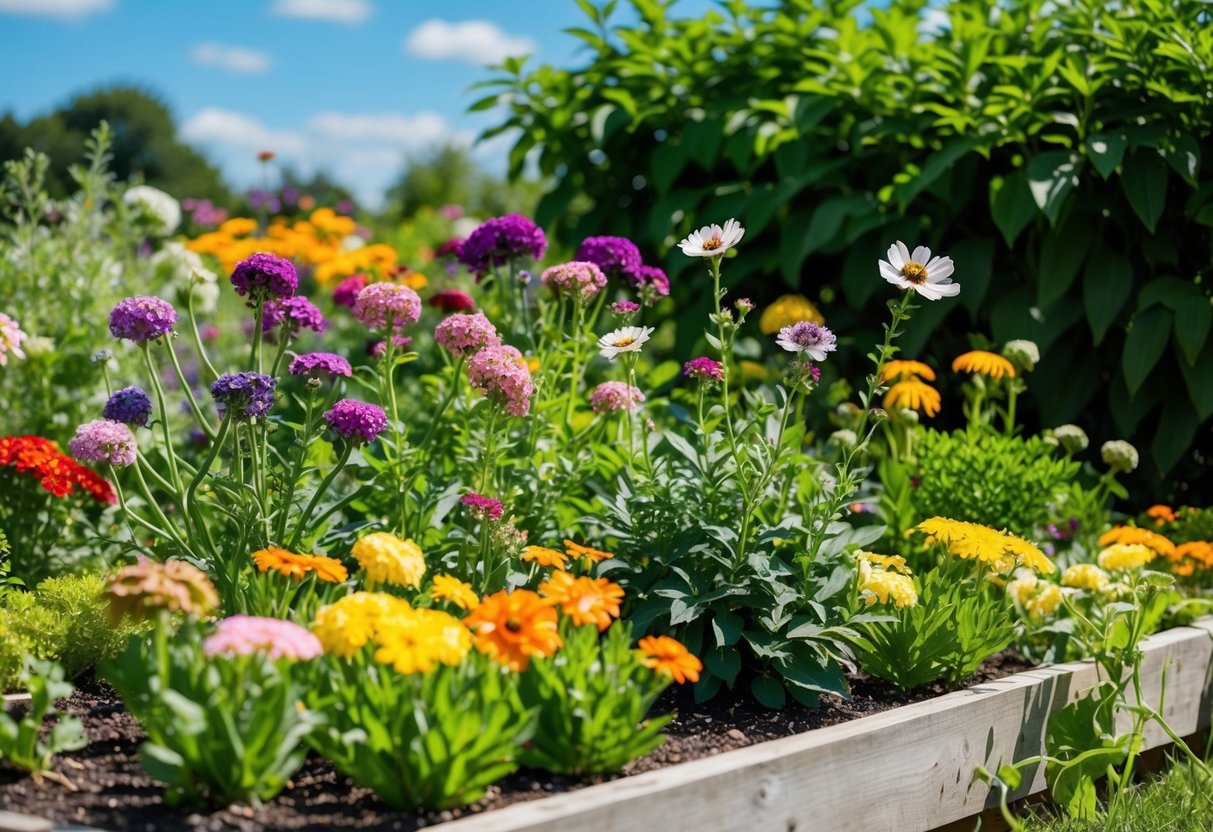
When growing hardy annuals in your garden, understanding their specific soil, sunlight, and water needs is crucial. These plants thrive in particular conditions, and with the right care, they can bring vibrant colors to your garden seasonally.
Soil and Sunlight Needs
Hardy annuals flourish in well-drained, rich soil. Ensure your garden soil is finely tilled and firm. These plants prefer soil that allows water to drain easily, preventing root rot. Good drainage is key for healthy plant growth.
Most hardy annuals need full sun for optimum blooming. Aim to plant them in areas where they will receive at least six hours of sunlight daily. In USDA hardiness zones, these plants adapt well to cool temperatures, especially during early spring and autumn. You can adjust planting location based on your specific hardiness zone to maximize their growth potential.
Watering and Maintenance
While some hardy annuals may display drought tolerance, regular watering is essential to keep them healthy. Water these plants moderately, ensuring the soil stays moist but not waterlogged. Overwatering can lead to diseases and pests, so achieving the right balance is important.
Regular maintenance includes removing spent blooms and weeds. Deadheading, or cutting off dead flowers, encourages more blooms and prevents the plants from using energy to produce seeds early. A light mulch layer can help maintain moisture and discourage weeds. Also, applying a general-purpose fertilizer during the growing season can enhance their performance.
Seasonal Planting Tips
Planting time plays a crucial role in the success of hardy annuals. In autumn, sow seeds directly into the garden for early spring blooms. You can also start seeds indoors before transferring them outside as temperatures rise. This helps protect young plants from sudden frosts.
When sowing seeds, follow instructions on spacing and depth to ensure proper growth. Group plants with similar water and sunlight needs together. Consider consulting USDA hardiness zones to determine the best planting times for your area. Knowing your zone helps you plan when to sow seeds for a flourishing garden. Emphasizing timing and placement can result in a beautiful and lively garden display.
Popular Varieties of Hardy Annuals
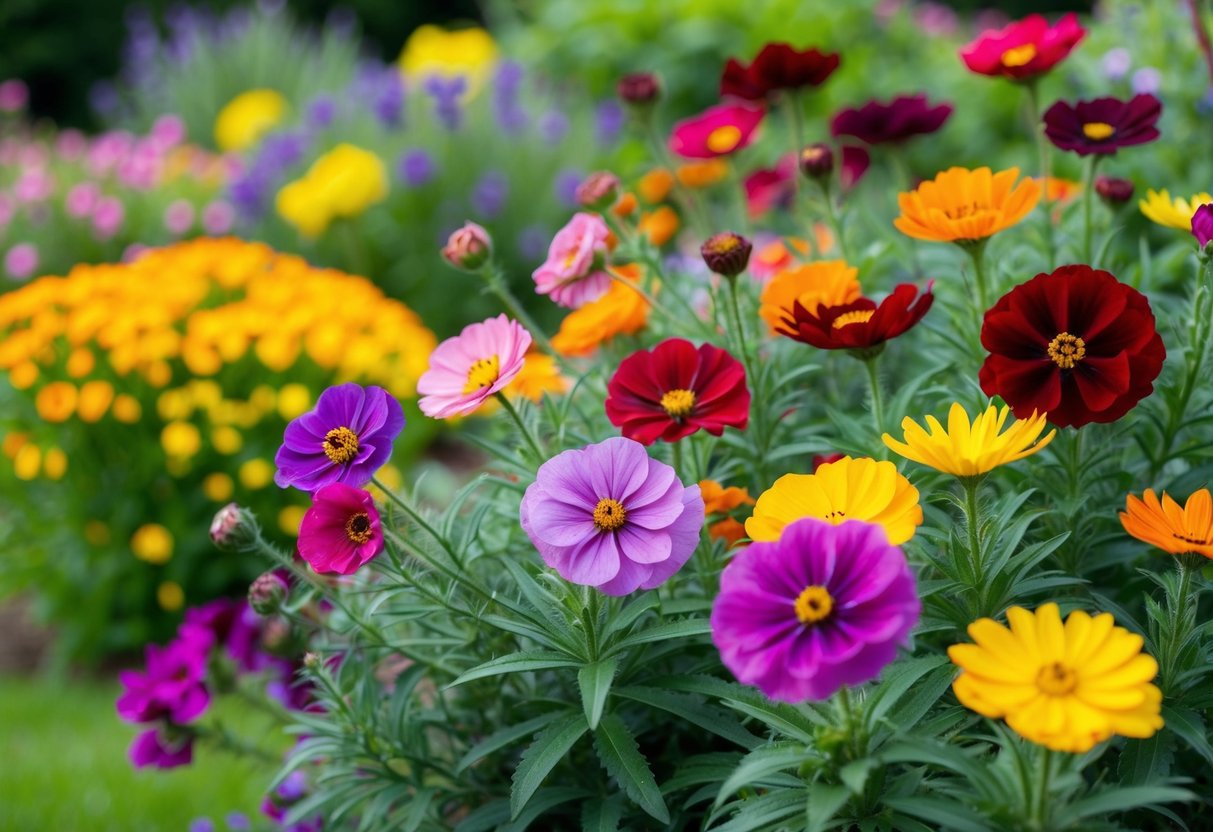
Hardy annuals are an excellent addition to any garden, offering a burst of color and resilience even in cooler temperatures. Below, you will discover both classic favorites and unique varieties that thrive as hardy annuals.
Classic Favorites
One popular hardy annual is the snapdragon, known for its wide array of colors like orange, white, and red. These blooms excel in cooler climates but require good drainage as they can be prone to mold. Another classic is the sweet pea, which is a climbing beauty with tendrils that need support structures like a trellis. They bloom in colors such as lavender, blue, and red.
Marigolds, with their vibrant yellows and oranges, are easy to grow and drought-tolerant, making them a reliable choice for any gardener. Nigella damascena, also known as love-in-a-mist, offers delicate blue flowers that add a whimsical touch to your garden.
Unique Varieties
The California poppy (Eschscholzia californica) stands out with its bright orange petals. It is drought-resistant and requires minimal care, making it a perfect fit for difficult growing conditions. If you’re looking for something unique, try the papaver somniferum or opium poppy, which provides large, showy flowers in shades of pink and white.
Consider planting nemophila menziesii, commonly called baby blue eyes, for its charming light blue flowers that thrive in shady spots. Lathyrus odoratus, better known as sweet pea, provides a fragrant option that climbs and excels in well-drained soil, adding interest with its butterfly-like blooms.
Landscaping with Hardy Annuals
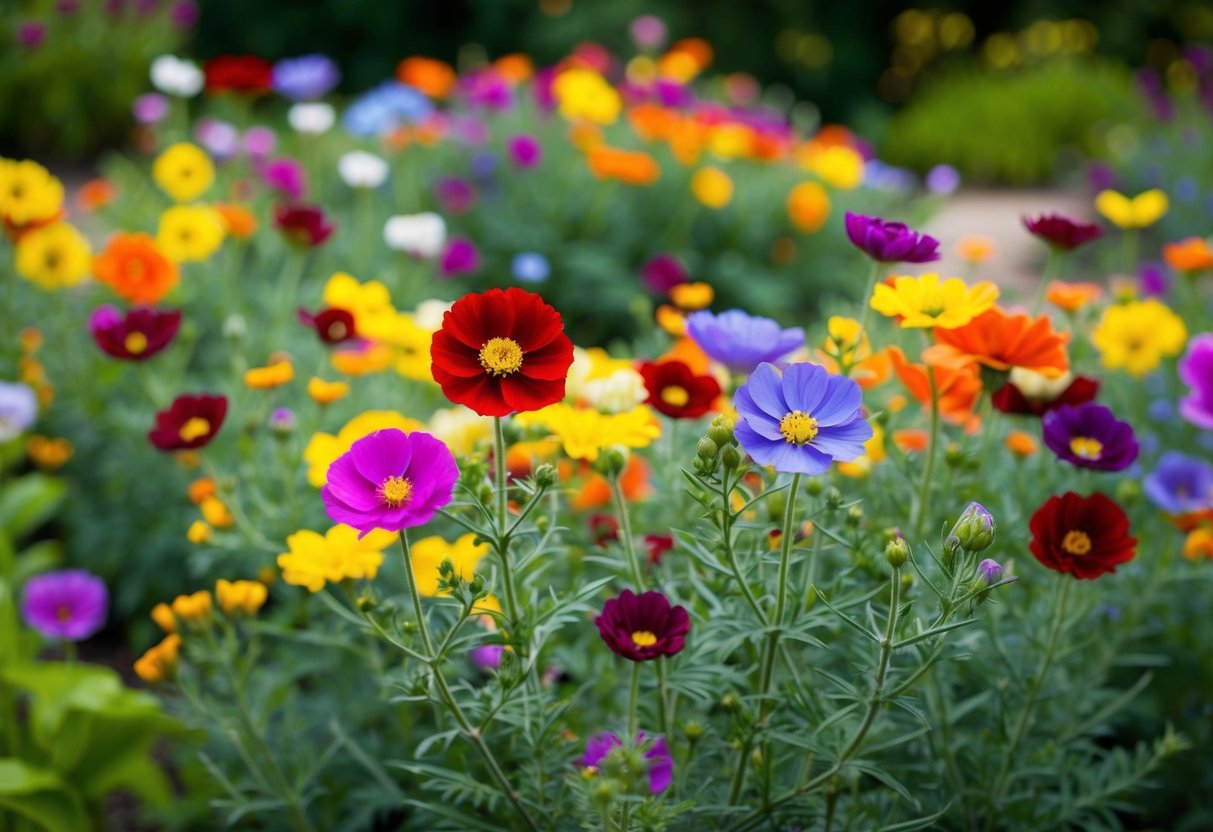
Hardy annuals bring vibrant colors and unique textures to your garden without the commitment of perennial plants. They offer flexibility in landscaping designs and can attract pollinators, making them an excellent choice for diverse garden environments.
Creating Year-Round Interest
Hardy annuals can be a great way to add seasonal color to your garden. By selecting various species, you can enjoy blooms from early spring until fall. For instance, snapdragons and pansies can start the season with a splash of color.
These plants are perfect for filling in spaces between perennial plants or creating stunning focal points in your garden.
Combining hardy annuals with evergreen shrubs or taller biennials ensures that your garden retains interest even when some annuals die back. Consider using them in rock gardens or alongside pathways to create a beautiful, ever-changing display.
When selecting hardy annuals, choose varieties with differing bloom times to ensure a continuous display. This approach prevents dull periods in your garden, keeping it lively and appealing for much of the year.
Companion Planting Strategies
Companion planting with hardy annuals encourages plant health and helps attract beneficial insects. For instance, planting marigolds can deter certain pests, protecting your other garden plants.
Growing hardy annuals like calendula or cosmos near vegetables can draw pollinators, boosting yields for crops such as cucumbers and tomatoes. Positioning these annuals next to vegetable beds can add beauty while serving a useful purpose.
Spatial planning is also vital. Arrange your hardy annuals so taller plants do not overshadow shorter ones, ensuring all receive adequate sunlight. This careful design enhances your garden’s aesthetic and improves overall plant health, allowing each to thrive.
Caring for Pollinators and Wildlife
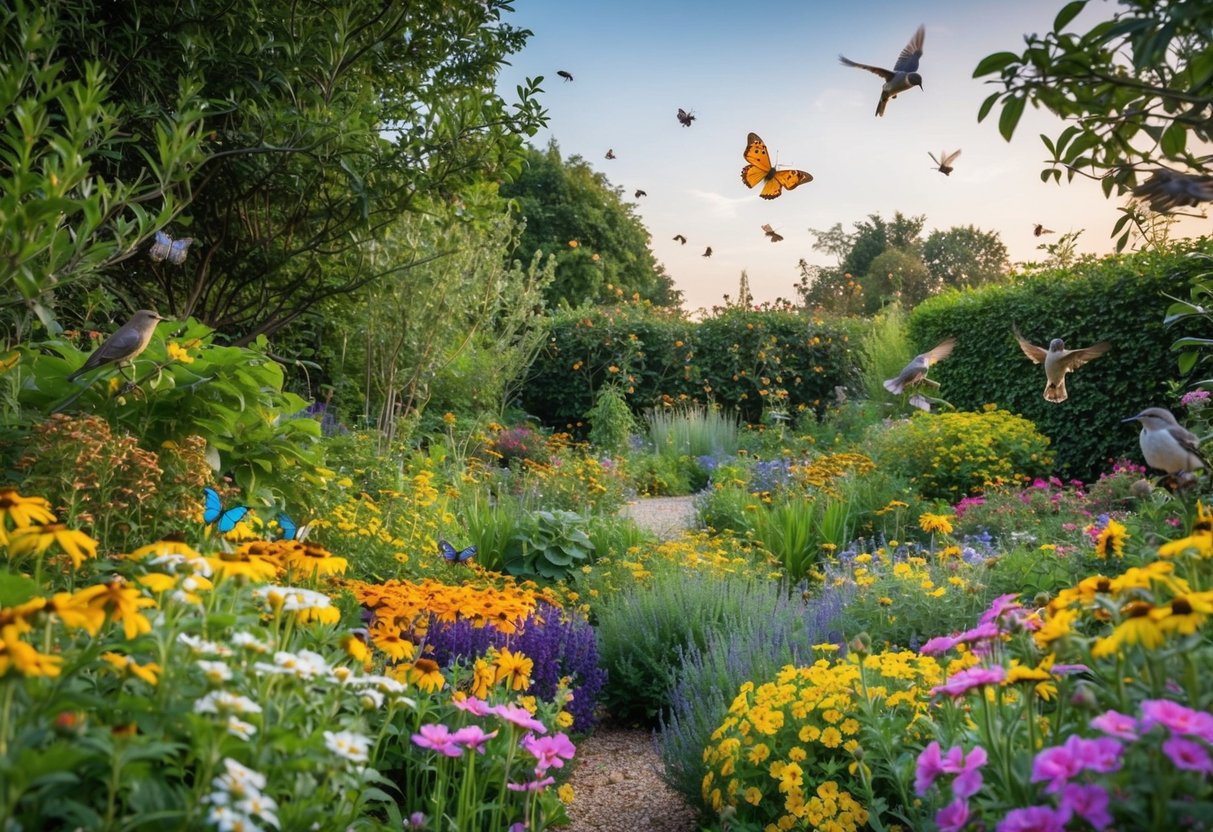
Creating a garden that welcomes pollinators and supports wildlife can benefit your plants and the environment. By selecting the right plants and using thoughtful practices, your garden can become a thriving haven for beneficial insects and animals.
Attracting Beneficial Insects
Pollinators like bees, butterflies, and hummingbirds are essential for a healthy garden. To attract these helpful creatures, plant a variety of nectar-rich hardy annual flowers. Flowers like zinnias and marigolds offer bright colors and ample nectar.
Choose a sunny spot in your garden for these plants, as most pollinators are active in sunlight. Regularly water your plants, especially during dry spells, to maintain their health and produce more blooms.
Avoid using pesticides, as they can harm pollinators and disrupt the garden’s natural balance. Instead, opt for organic solutions or let beneficial insects like ladybugs and lacewings manage pests naturally.
Create diverse habitats by incorporating a mix of flowering plants, shrubs, and trees. These layers offer shelter and nesting spots for various pollinators and other wildlife.







